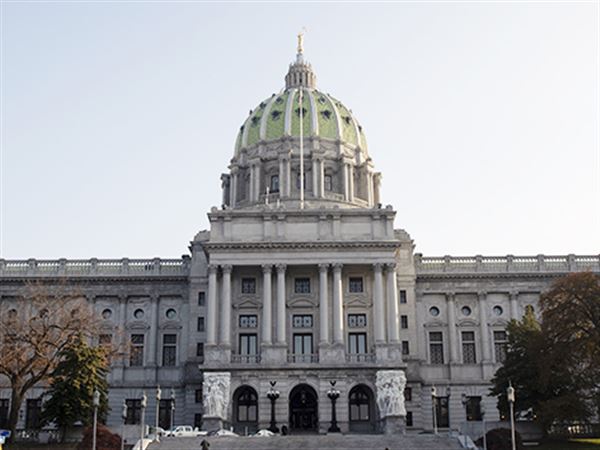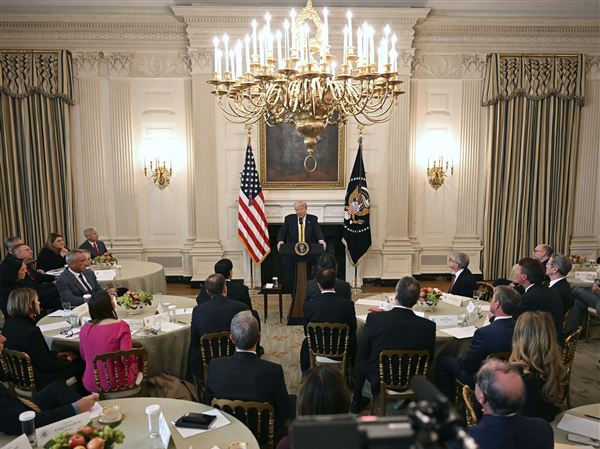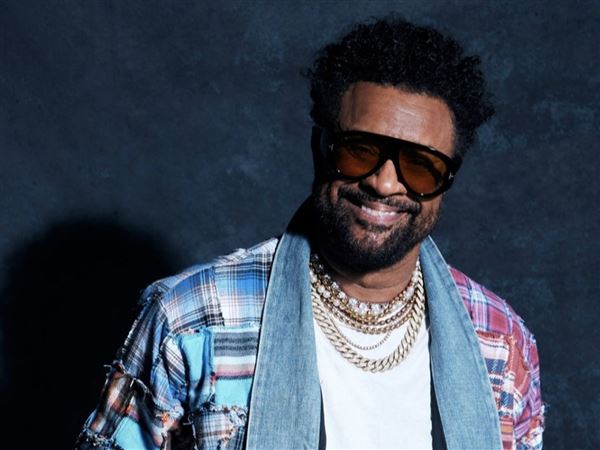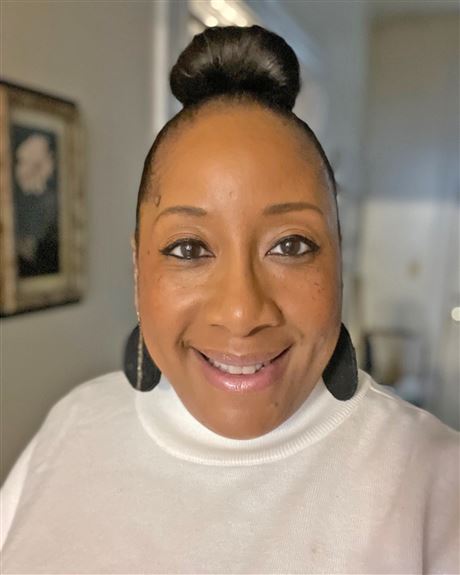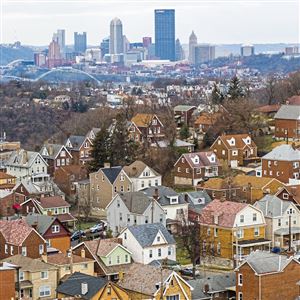On April 30, Pittsburgh Action Against Rape will hold its annual Teal Ball. More than 500 guests are expected, making it likely the most well-attended event in the organization’s history.
Maybe the extra excitement is because this is the first Teal Ball held in person since 2019. Or, maybe it’s the revamped branding and reinvigorated mission attributed to the organization’s executive director of one year, Lisa Perry. Or, it could be that this marks PAAR’s 50th year, making it one of the country’s oldest rape crisis centers.
In anticipation of the event, Ms. Perry sat down with the Post-Gazette to talk about looking back and forward, evolving such a proud organization and why the “R” in PAAR means more than it implies.
Please talk about the significance of 50 years.
We are Allegheny County’s only rape crisis center that’s solely devoted to sexual assault. We are one of the country’s oldest rape crisis centers. We think we’re number two, but we’re definitely in the top three. So, this is a very important year for us because the work over the past 50 years, those amazing, feisty, compassionate women that started this in 1972, when we were just a 24-hour help line and we did medical advocacy. To have seen us in 50 years grow to have 47 staff members, multiple departments, working in all the different aspects of someone’s trauma and continuing to grow even still is amazing. We serve about 3,000 clients a year. I’m talking from children to adults. This year we get to look back because often we’re so much in the trenches that we don’t often get to take a moment to notice how far we’ve come.
Your professional background includes so many efforts to better communities, from working in education to Homewood Children’s Village and Jeremiah’s Place. What made PAAR the next right step?
As a nonprofit leader, you should always be looking for ways to leverage all of what you know and all you can do on behalf of all the communities you want to serve. So, it was an easy transition for me coming from Jeremiah’s Place and the work I was doing with single women but also just looking at what it means to be human and what it means to care about the needs of others. I know that I have crossed paths with so many women who have experienced sexual violence. So, it was easy for me to know that there was a space for me to lead and to grow and advance this work. It was a natural progression for me.
While the name of the organization includes the word “rape,” the work done there includes a much broader scope of trauma and includes therapy, legal help, a 24-hour hotline, wellness programming. Tell me more about the spirit behind the work.
“Sexual violence” is how we like to term this work. Rape in our title is very misleading. It does feel like we’re a one-trick pony, but that is not the case at all. We try to make sure that we are working to eradicate sexual violence which covers a whole host of things. It delves into rape, sexual harassment and coercion. We want to meet people where they are and not prioritize what sexual violence is.
The country, the world, we always prioritize rape as the most atrocious thing that could happen, which it is. But that’s not everybody’s experience with sexual violence. It could be feeling coerced into doing something sexually. It could be an inappropriate advance that made you uncomfortable in the workplace. For everyone, their trauma experience is very unique to themselves. Sometimes when we amplify one area of sexual violence for another, victims who fall prey to some of those other areas of sexual violence, they may not feel it is as important or as reportable or as valuable to address. What we try to do is anyone who has any trauma around sexual inappropriateness in their lives can find a place and a home and support at PAAR.
You initiated a rebranding campaign shortly after you began leading PAAR. Why did you start there?
When I started in February of 2021, it was right in the middle of the pandemic. It’s a really challenging time to transition leadership. First off, I did a listening tour. I talked to our 47 staff members and internal stakeholders but did a lot of work talking to our external stakeholders about what were the roses and the buds and the thorns in the agency as they experienced it. In curating all of that information, we learned there was a disconnect in terms of accessibility and feeling a sense of warmth from us in terms of collaborating with the community.
The first thing you can do as you’re trying to shift culture is to do it visually. We embarked on a 7- or 8-month branding process where we involved our stakeholders and our staff and even some clients to determine how to go forward. That was my first way to show how things are going to be different. We are making change, and not only are we inviting this growth and change for our clients, but we were also doing it as an agency as well.
We also revamped our Project Traffick Stop program which helps address the needs of those experiencing sex exploitation and trafficking. Being called Project Traffick Stop, it was very misleading. It did not feel inviting for those people who need care and healing and support. So, we changed it to Project RISE. We have a butterfly that flies now, and it shows the growth and the transformation, and it stands for Resilience, Independence, Strength and Empowerment. That’s how we want to reach clients, with an invitation to explore this journey of healing on their timeline, not on anyone else’s.
What else is on your to-do list?
We want to lower the barrier to access and increase our visibility. It’s really hard to go out and speak about the subject of rape and sexual violence, but it’s important to help create this social norm of acceptability.
Diversity and inclusion is also key. We have not always served the more marginalized populations of our community well. It’s very difficult because of cultural norms within certain communities to talk about this work and to get the help that they need. We have been doing some work internally in terms of increasing the diversity of our staff but also making sure that when we’re out in communities that we’re in ones we haven’t been in much. Tha includes our BIPOC communities, reaching out to our LGBTQIA+ community and making sure our services and resources and our agency starts to reflect the clients we want to serve on a daily basis.
And we want to meet some immediate needs of our clients.
Oftentimes, some of our clients come in, they want to seek the help that they need for their trauma, but they also have real-time critical needs that have to be addressed before they can start to address those deeper issues. I’m talking about food insecurity, housing insecurity, thinking about how they’re going to make it from day to day, child care and so forth.
Through Project RISE, we have a PAARtique that just launched this year, where we’re providing clothing. Everything is new, and everything has tags because everyone deserves dignity. This is an opportunity for them to come into a beautiful space and shop for the things they need. They may need it for a court appointment, a job interview, just to have multiple pieces of clothing to wear. And we have things for their children as well. If we can meet them where they are — and that’s our new tagline, “Every step of the way” — then we can get them to address some of the other deeper issues of trauma they’re experiencing. But when you’re hungry and you can’t feed your children and you’re trying to figure out how to make ends meet, it’s really hard to stay present for that work.
And we have a food pantry now that houses shelf-stable items.
PAAR serves about 3,000 people per year, but we know how difficult it is to talk about these events and how some women don’t realize that what they experienced is a form of trauma. Is there a way to know how many women experience sexual violence?
When you look at the statistics of sexual assault in our country, 1 in 5 women will have experienced sexual violence in their lifetime. If it’s 1 in 5, there’s always someone we know. If we go out with five girlfriends, we know someone in that setting has experienced this horrible situation, and it’s probably more than one.
Sexual violence is one of the most underreported crimes, and that’s the challenge: to make a space that helps build trust that people feel safe enough to tell their story. As we start to hear those brave stories, the first thing we have to do as a community of people is believe them. The fact that people don’t come forward because they don’t feel that someone is going to take their story seriously is the tragedy, and it starts with believing the victim.
Tell me how working at PAAR and interacting with survivors of sexual violence on a daily basis has affected you.
Early on in the pandemic, we were seeing a reduction in calls to our help line. We knew the abuse wasn’t ending. It was just happening behind closed doors at a time when we were being told to “shelter in place,” “stay home, stay safe.” We knew that sometimes being home was not a safe place for our clients. Just having to hold that space and that energy has been challenging for all of us.
At a meeting last month, we talked about how we hold the hope for our clients, the hope that they will get the help that they need, the hope that they will heal, the hope that they will get justice. That’s heavy and it’s a lot to carry, but it’s an honor.
But that’s what it takes, having an understanding and an empathetic approach to this work. You can’t do it without feeling. To know we are making a difference in 3,000 lives every year and then some, because we’re out in the community doing education and prevention work. The goal is, if we can prevent this, and it is preventable, we have changed the game for people in our communities. So, I’m just honored. It’s heavy, but it’s not anything in comparison to what our clients are going through, so I can hold that.
This interview was lightly edited for space.
Abby Mackey: amackey@post-gazette.com, Twitter @AnthroAbbyRN and IG @abbymackeywrites.
First Published: April 24, 2022, 10:00 a.m.

